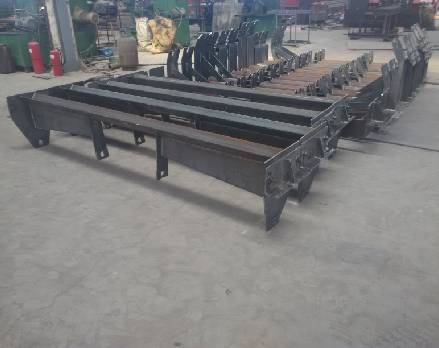 Afrikaans
Afrikaans  Albanian
Albanian  Amharic
Amharic  Arabic
Arabic  Armenian
Armenian  Azerbaijani
Azerbaijani  Basque
Basque  Belarusian
Belarusian  Bengali
Bengali  Bosnian
Bosnian  Bulgarian
Bulgarian  Catalan
Catalan  Cebuano
Cebuano  Corsican
Corsican  Croatian
Croatian  Czech
Czech  Danish
Danish  Dutch
Dutch  English
English  Esperanto
Esperanto  Estonian
Estonian  Finnish
Finnish  French
French  Frisian
Frisian  Galician
Galician  Georgian
Georgian  German
German  Greek
Greek  Gujarati
Gujarati  Haitian Creole
Haitian Creole  hausa
hausa  hawaiian
hawaiian  Hebrew
Hebrew  Hindi
Hindi  Miao
Miao  Hungarian
Hungarian  Icelandic
Icelandic  igbo
igbo  Indonesian
Indonesian  irish
irish  Italian
Italian  Japanese
Japanese  Javanese
Javanese  Kannada
Kannada  kazakh
kazakh  Khmer
Khmer  Rwandese
Rwandese  Korean
Korean  Kurdish
Kurdish  Kyrgyz
Kyrgyz  Lao
Lao  Latin
Latin  Latvian
Latvian  Lithuanian
Lithuanian  Luxembourgish
Luxembourgish  Macedonian
Macedonian  Malgashi
Malgashi  Malay
Malay  Malayalam
Malayalam  Maltese
Maltese  Maori
Maori  Marathi
Marathi  Mongolian
Mongolian  Myanmar
Myanmar  Nepali
Nepali  Norwegian
Norwegian  Norwegian
Norwegian  Occitan
Occitan  Pashto
Pashto  Persian
Persian  Polish
Polish  Portuguese
Portuguese  Punjabi
Punjabi  Romanian
Romanian  Russian
Russian  Samoan
Samoan  Scottish Gaelic
Scottish Gaelic  Serbian
Serbian  Sesotho
Sesotho  Shona
Shona  Sindhi
Sindhi  Sinhala
Sinhala  Slovak
Slovak  Slovenian
Slovenian  Somali
Somali  Spanish
Spanish  Sundanese
Sundanese  Swahili
Swahili  Swedish
Swedish  Tagalog
Tagalog  Tajik
Tajik  Tamil
Tamil  Tatar
Tatar  Telugu
Telugu  Thai
Thai  Turkish
Turkish  Turkmen
Turkmen  Ukrainian
Ukrainian  Urdu
Urdu  Uighur
Uighur  Uzbek
Uzbek  Vietnamese
Vietnamese  Welsh
Welsh  Bantu
Bantu  Yiddish
Yiddish  Yoruba
Yoruba  Zulu
Zulu belt conveyor parts and functions
Understanding Belt Conveyor Parts and Their Functions
Belt conveyors are an essential component in various industries, designed to transport materials efficiently from one place to another. Their utilization spans across manufacturing, mining, agriculture, and logistics sectors. To fully appreciate the role of a belt conveyor in these operations, it is crucial to understand its essential parts and their respective functions.
1. Conveyor Belt
The conveyor belt is the most visible part of the system, designed to transport materials along the length of the conveyor. Typically made from materials such as rubber, fabric, or metal, the choice of belt depends on the characteristics of the materials being transported. The belt’s surface can be smooth or textured to accommodate different types of loads.
2. Drive Pulley
The drive pulley is a key component that powers the conveyor system. It is connected to a motor that drives the belt forward. As the motor turns the drive pulley, it causes friction between the pulley and the belt, allowing the belt to move and carry materials. Drive pulleys can differ in size and are often designed to withstand heavy loads and varying speeds.
3. Idler Pulley
Idler pulleys support the conveyor belt and help maintain its alignment and tension. These rollers are critical in reducing friction and wear on the belt as it moves. They are strategically placed along the conveyor to provide stability and prevent sagging, which can lead to misalignment and inefficiencies.
Proper tension in the belt is vital for efficient operation. A tensioning device adjusts the tension in the belt to ensure it is neither too loose nor too tight. This adjustment prevents slippage on the drive pulley and reduces wear on the belt and pulleys. Common tensioning devices include hydraulic and mechanical systems that can be easily adjusted for maintenance.
belt conveyor parts and functions

5. Frame
The frame or structure of the conveyor is typically made from heavy-duty materials to support the weight of the conveyor components and the materials being transported. The frame must be rigid and strong enough to prevent any flexing during operation. It often includes side rails to keep materials from falling off the belt and ensure that the conveyor tracks properly.
6. Skirtboard
Skirtboards are installed to prevent spillage of materials from the conveyor. Positioned along the edges of the belt, they create barriers that keep materials contained, thus reducing waste and enhancing safety in the workplace. Effective skirtboards help minimize environmental impact and ensure that the materials remain on the conveyor.
7. Conveyor Controls
Conveyors are often equipped with controls that allow operators to manage and monitor their operation. These controls can include variable speed drives, safety shut-offs, and sensors for detecting belt misalignment or material buildup. By utilizing modern control systems, companies can improve operational efficiency and reduce downtime.
8. Safety Features
Safety is paramount in conveyor operations. Numerous safety features can be integrated into belt conveyors, including emergency stop buttons, guards, and automatic shutoff systems. These features are designed to protect operators and maintenance personnel, ensuring that the risk of accidents is minimized.
Conclusion
In conclusion, understanding the parts and functions of a belt conveyor is essential for optimizing its use within various industrial applications. Each component, from the conveyor belt to safety features, plays a crucial role in ensuring efficient material handling, reducing labor costs, and improving overall productivity. As industries continue to evolve, advancements in conveyor technology will lead to even more efficient and safer material transport solutions. Whether it’s in a manufacturing plant or a mining site, the reliability of belt conveyors demonstrates their significance in modern operations.
-
Revolutionizing Conveyor Reliability with Advanced Rubber Lagging PulleysNewsJul.22,2025
-
Powering Precision and Durability with Expert Manufacturers of Conveyor ComponentsNewsJul.22,2025
-
Optimizing Conveyor Systems with Advanced Conveyor AccessoriesNewsJul.22,2025
-
Maximize Conveyor Efficiency with Quality Conveyor Idler PulleysNewsJul.22,2025
-
Future-Proof Your Conveyor System with High-Performance Polyurethane RollerNewsJul.22,2025
-
Driving Efficiency Forward with Quality Idlers and RollersNewsJul.22,2025





























